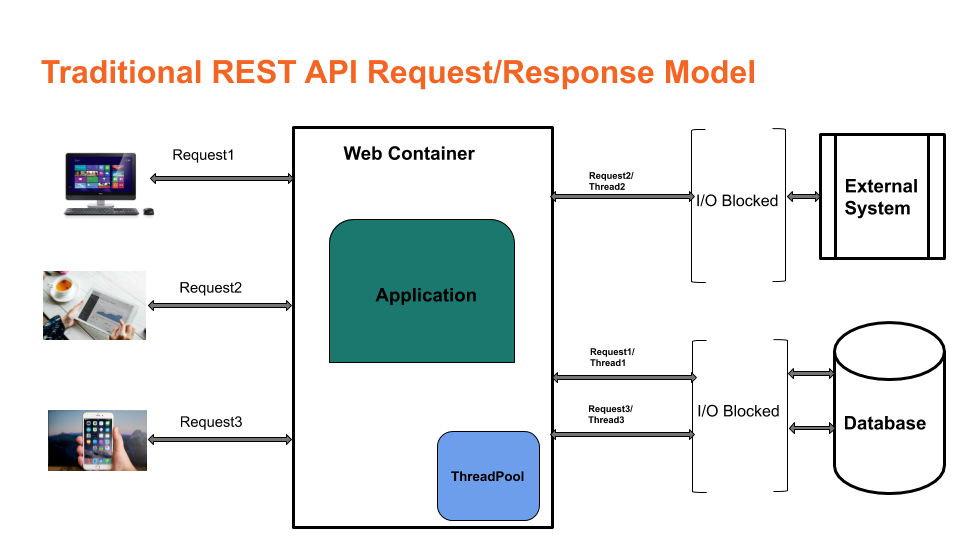How to build Reactive RESTful APIs with Java WebFlux
In the world of modern software development, building responsive and efficient APIs is crucial to providing a seamless user experience. Traditional synchronous APIs have limitations when it comes to handling a large number of concurrent requests, often resulting in sluggish performance and unresponsive applications. This is where reactive programming comes into play, and Java WebFlux is a powerful framework that allows developers to build reactive RESTful APIs that can handle high levels of concurrency without breaking a sweat.
Understanding Reactive Programming
Reactive programming is an approach that deals with asynchronous and event-driven programming paradigms. It focuses on building systems that can react and respond to changes in a timely manner, making it ideal for applications that need to handle a large number of concurrent requests, such as real-time applications, IoT devices, and streaming services.
In traditional imperative programming, when a function is called, it blocks the execution until it completes, potentially causing bottlenecks and reducing overall application performance. Reactive programming, on the other hand, embraces a non-blocking model, allowing applications to continue processing other tasks while waiting for I/O operations to complete.
Introducing Java WebFlux
Java WebFlux is part of the Spring Framework, a popular choice for building Java-based applications. WebFlux provides a reactive programming model for building web applications, including RESTful APIs. It’s built on top of Project Reactor, which is a reactive streams library that provides the building blocks for reactive programming in Java.
One of the key features of Java WebFlux is that it supports both annotation-based and functional programming styles. This means you can build reactive APIs using traditional Spring annotations or use a more functional approach using Java 8 lambdas and the RouterFunction API.
Building Reactive RESTful APIs with WebFlux
Let’s take a high-level look at how you can build a reactive RESTful API using Java WebFlux:
1. Set Up Your Project
Start by creating a new Spring Boot project. You can use Spring Initializr or your preferred build tool. Make sure to include the “Reactive Web” dependency to enable WebFlux in your project.
2. Define Your Data Model
Design the data model for your API. This includes creating POJOs (Plain Old Java Objects) that represent the resources you’ll be working with.
3. Create API Endpoints
Use annotations or functional routes to define your API endpoints. Annotations are familiar if you’ve worked with traditional Spring MVC. Functional routes provide a more programmatic and concise way to define routes using Java 8 lambdas.
4. Implement Reactive Logic
When handling requests, you’ll often interact with databases, external services, or perform I/O operations. WebFlux encourages the use of reactive data repositories, allowing you to seamlessly integrate with reactive databases like MongoDB.
5. Handle Errors
Reactive programming introduces new challenges when it comes to error handling. WebFlux provides mechanisms to handle errors and exceptions in a reactive way, ensuring that failures are propagated efficiently through the reactive pipeline.
6. Test Thoroughly
Reactive applications can behave differently under heavy loads and concurrent requests. Thoroughly test your API using tools like JUnit, WebTestClient, and load testing frameworks to ensure it performs well and remains responsive under different scenarios.
Benefits of Reactive RESTful APIs
Building reactive RESTful APIs with Java WebFlux offers several benefits:
- Scalability: Reactive APIs can efficiently handle a large number of concurrent requests, making them suitable for applications with high traffic and varying workloads.
- Responsiveness: By embracing non-blocking I/O, reactive APIs ensure that applications remain responsive even during heavy loads, providing a better user experience.
- Resource Efficiency: The asynchronous nature of reactive programming reduces the need for thread-blocking, leading to more efficient resource utilization.
- Flexibility: WebFlux supports both annotation-based and functional programming styles, allowing developers to choose the approach that best suits their coding preferences.
Java WebFlux brings the power of reactive programming to the Spring ecosystem, enabling developers to build high-performance, responsive, and scalable RESTful APIs. By embracing the principles of reactive programming, developers can create applications that can handle the demands of modern, data-intensive, and real-time scenarios. Whether you’re building a streaming service, a real-time dashboard, or an IoT backend, WebFlux provides the tools you need to create robust and efficient APIs. So, go ahead and explore the world of reactive programming with Java WebFlux to unlock the potential of truly responsive APIs.

